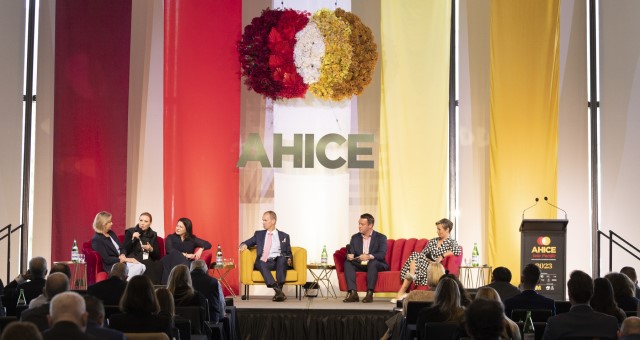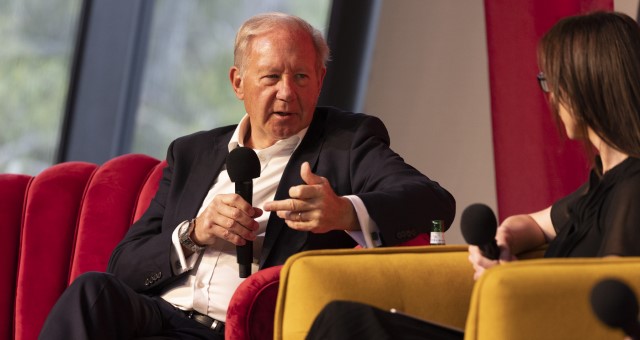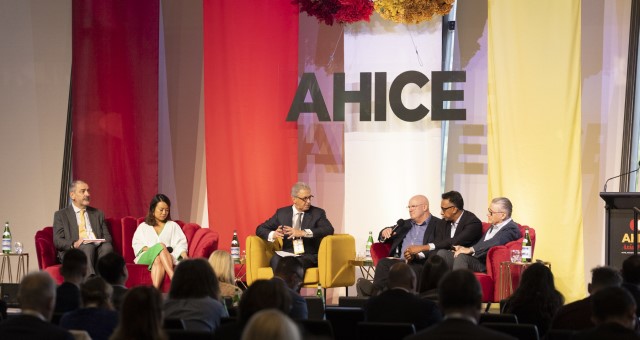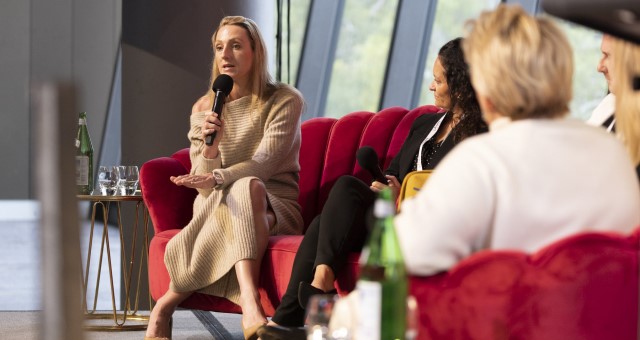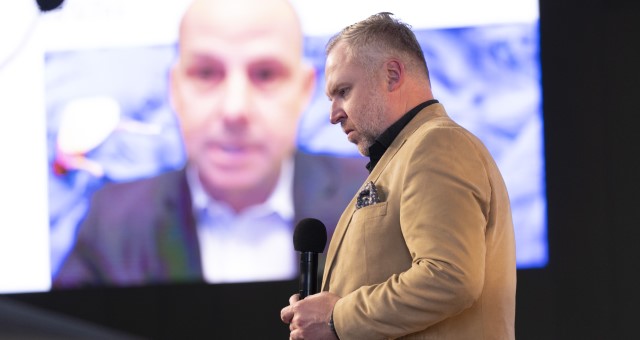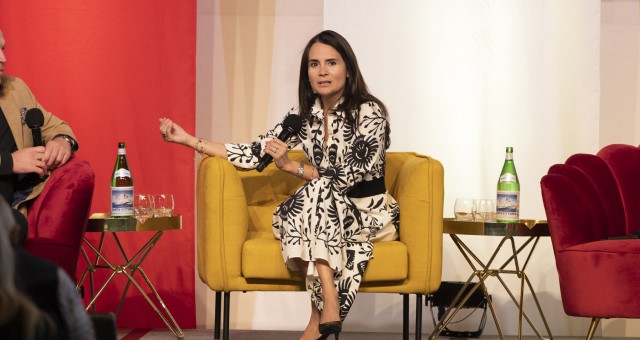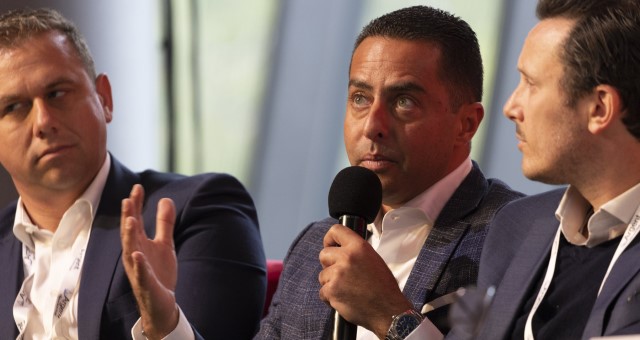The Asia-Pacific Hotel Industry Conference and Exhibition (AHICE) drew more than 1400 delegates to Adelaide last week for insightful keynote presentations, evocative panel discussions and invaluable networking opportunities.
AHICE Day 2
Day two’s Breakfast Masterclass, moderated by Baker McKenzie’s Sebastian Busa, kicked off with no lesser controversy, tackling the gnarly subject of the so-called ‘Great Reset’.
HTL’s, David Simpson waded straight in, declaring that franchise agreements presented “great value for money” in the current environment, but had been held back in growth “due to a lack of white label management.”
John Sutcliffe of TFE countered with endorsement of the management agreement on the basis that it better catered to owners’ needs including financial advice.
The topic of ‘green’ is never very far away in any discussion and Talis Sterns reminded the packed room that building to future-proofed green standards will be most attractive to finance. Simpson agreed, “not building to green standards is a big mistake.”
In summation, Sterns warned that there existed insolvency risks among builders, as seen in the recent residential market worries.
While there was some dissent on the short-term optimism, Sutcliffe was bullish, “things will improve in the next 12 months.”
Next up, HM Editor, Ruth Hogan, quizzed Pro-Invest’s Ron Barrott and Jan Smits on the dynamic group’s current plans and outlook.
Both were understandably pleased with the recent exquisite Art Deco Kimpton Margot opening in the Sydney CBD in conjunction with IHG. “Kimpton has all the benefits of 5-star without the formality,” said Barrott.
Smits pointed to opportunities in the SE Asian market and echoed the pervading sentiment of dealing with staff recruitment and training, pointing out that “the new generation candidates are more environmentally and socially aware.”
A key takeaway was that hospitality is on the radar for investors, given some nervousness for traditional CBD office real estate. “The more enlightened institutional investors are now more understanding of the potential of hospitality in their portfolios,” said Barrott.
On the asset managers’ panel, moderated by Baker McKenzie’s Roy Melick, it was acknowledged that asset managers have had a hard time of it these last couple of years enacting COVID-driven efficiencies on top of their usual, arduous duties.
THSA’s Rodger Powell, never shy in his predictions, observed that “the market has no more tolerance for paying more for less” with regard to these COVID-driven practices.
The conversation quickly shifted to the topic of data collection and implementation within the hospitality industry. “Data is not being used to advantage the guest,” KCom’s Howard Kemball said, while Dean Minett added that “it is driven more by the data companies and not of great benefit”; Powell quipped “we are so far behind with many of our dinosaur systems” underscoring the need to both modernise and implement more effectively.
Ruth Hogan met virtually with BWH Hotel Group and World Hotels’ Ron Pohl for the next Q&A where he observed that while the post-COVID recovery had been stronger than expected, producing record returns in some markets, “rates and occupancies will soon stabilise.”
Pohl went on to say that mid-scale, extended stay brand “Home” has proven popular with Americans and that the emerging Gen Z market was pushing new development in brands like Aiden (part of BWH).
On the topic of technology, he echoed the frequently cited sentiment that “technology should not replace personal service. People are the essence of our industry.”
Gilda Perez-Alvarado of JLL came all the way from Miami for her Q&A and was quick to point out that “we’ve been in a synthetic environment for the last couple of years and get ready for some reality plugs to be pulled.” This reality is likely to manifest in more sales as more players and more capital become active in the sector.
Touched on several times during various discussions, was the rebirth of F&B. “F&B is no longer a hotel’s loss-leader,” she said nothing that hotels are adopting several strategies to reinvigorate F&B, including the “high street” model or even embracing local chefs and cruising in specific destinations.
The energetic young Group Director of Marketing for Ovolo Hotels, Stephen Howard, eschewed his trademark white sneakers to moderate a bevy of sharp minds on the topic of marketing and loyalty.
Renae Trimble from Accor Plus, leaped in to tell us that marketing was all about telling the story. “We can now tell that story better than ever by using every available channel” and collaboration was an important tactic in an overall strategy, including the use of ambassadors and advocates.
Alex Holden from EVT enlivened the mood with this cheery anecdote: “‘In terms of brand identity it’s really important for us to understand the difference between marketing, branding and customer experience. I stumbled across this great analogy that breaks it down perfectly – marketing is like asking someone on a date, branding is the reason they say yes, and customer experience is the reason they stay and come back for more.”
Emma Terry of the SATC recognised ‘earned media’ was harder to achieve. “As a ‘challenger’ state, PR is important to our brand strategy, but it needs to have a holistic approach.” Florencia Aimo of Marriott added that message consistency across all channels was vital.
Loyalty is another perennial topic popping up in many panel discussions and never more so under the umbrella of marketing.
Alex Holden was on the money again with “The way you make customers feel must be analysed at every point. Be sure to embrace not only what they like, but that which helps you improve.”
Howard ruled off the discussion with an insight into payment options, noting that from a recent European summit, it was revealed that 75% of consumers will not buy if their preferred payment method is not available and the rise of instalment options such as Afterpay, underscoring the need to expand payment mechanisms into the marketing mix.
Before morning tea, Andrew Robson regaled us with the revolutionary methods employed by SPL (who operate the largest laundry in the Southern Hemisphere) when “doing linen differently”. Even his humble face washers are RFID coded to ensure prompt and accurate supply at all times.
Refreshed after SPL’s morning tea, Ruth Hogan was back on stage with a Q&A with Antony Ritch, CEO of TFE Hotels examining the options for themselves as well as hotel owners and investors. Whether owning, leasing or partnering, the key is always the return to owners and moving with shifts in the consumer profiles is key to both building and maintaining loyalty.
James Wilkinson was back in the seat and online to Florida and Michael Brown, CEO of Travel + Leisure Co. He touched T+L’s aim to “fill the white space outside the brand” by moving into new sectors beyond the traditional timeshare model of Wyndham and to allow unrelated brands to enjoy the benefits of the hospitality industry.
“We have hopes for Southeast Asia and Japan with lessons mastered in the Caribbean,” he said. And as for timeshare in cruising? “Stay tuned.”
Leanne Harwood of IHG engaged diversity advocate Christopher Schiavello from his namesake construction company. Under the tagline of “getting shit done” Schiavello wants to “make change by bringing ideas and conversations together” and by “making sure you are not cutting off your talent pool by not talking to all the people.” And if you are going to celebrate diversity “do it authentically and positively,” he said.
The following panel discussion was all about ‘Hot Collection Brands’ moderated by Rob Williamson from Savills who rattled off a string of familiar buzzwords like ‘unique’ ‘authentic’ ‘bespoke’ and ‘individual’ used to describe the sector and asked if they really lived up to these bold descriptions.
Brett Forer from Accor was first out of the blocks pointing out the slew of brands and participation options available to clients under the massive Accor umbrella. “Linking to Accor is fundamental to distribution and loyalty,” he said, “and with a similarity of service and feel, the perceived experience commands a premium room rate.”
Kate Atkinson from Hyatt drilled a little deeper identifying that “customers want a more immersive experience. Something they can tell their friends about that also connects to the land and place.” Using the Fuji Speedway Hotel, part of the Unbound Collection, as a standout example of one-of-a-kind.
Human Resources was once a minor player in the hotel management sphere. No longer, and Associate Professor Simon Pawson from Torrens University met a highly credentialled panel to thrash it out.
Natasha Rasheed from Marriott set the tone with “There’s a world of opportunity in hospitality and a lot more than just salary and work/life balance.”
Mary Hogg from Hilton added “We are more committed to leadership training than ever before”, an aspect vividly reflected in the Future Leaders segments throughout the three days of AHICE.
Lynda Ugarte of IHG made it known that the traditional reliance on foreign students and backpackers was an increasingly obsolete strategy and that the industry “should continue to attract talent from within our borders and apply the same principles to attract candidates as guests.”
The room murmured in agreement when Hogg insisted the industry “needs to stop the snobbery around hospitality and reprofessionalise”.
The topic of ‘white label’ was raised again by Andrew Bullock of 1834 Hotels in his Q&A with James Wilkinson. “White labelling makes sense” he asserted, “it gives new investors a level of comfort while allowing access to markets not normally achievable through distribution and data sharing.”
With his SATC Chair hat on, Bullock was not shy to extoll the massive success of the recent LIV Golf event for his home state, asserting “the event was a massive driver of visitation to other regions” and quoted the confidence-inspiring phrase “a rising tide lifts all boats.”
Before an excellent lunch, delegates were buoyed by the unveiling of a new logo for Accommodation Australia. The amalgamation of Accommodation Association and Tourism Accommodation Australia (TAA) to form a united body is due to take place on July 1.
Tim Kobe, the designer of the first Apple Store, transfixed the room two days prior at Design Inn and did it again at AHICE, encouraging us to avoid the risk of commoditising the offering and deliver the experience in ways that matter.
The key takeaway was the reverse of most common value-creation actions. Beginning with human outcomes and working backwards to develop strategy and tactics, organisations can nurture and retain customers and employees using a similar template.
Ruth Hogan was back to moderate the Design, Build and Sustainability Outlook, the latter being a common thread in so many discussions over the three days.
The subject quickly moved to art with Rachel Luchetti reaffirming that “art is our living heartbeat which resonates around life’s moments and should be prioritised.”
Christchurch-based architect Richard Dalman drew upon Wellington’s magnificent Te Papa museum as an example of outstanding cultural design driven by government projects, a lead he believed should be followed more often in hotel design.
History and heritage go hand-in-hand and Angela Biddle of Fender Katsalidis pointed to the heritage-listed Sydney Sofitel Wentworth, built as a Qantas Hotel in 1966, as a perfect example “of hotel design that draws on the glamour of travel.”
Another popular trend employed in hotel design, Philippa Le Roux mentioned, is “adaptive reuse” which begs to “go beyond current standards and regulations” as a way of future-proofing valuable assets.
In wrapping up, Dalman identified developers’ desires “to not only be green, but to be seen to be green.”
NSW 24 Hour economy Commissioner, Michael Rodrigues, ignited a lively discussion on F&B that began with William de Beaurepaire of De Beaurepaire Wines pointing to the carbon footprint imposed on the economy and environment by failing to use locally-sourced produce.
The creative approach to F&B was also raised with EVT’s Adam Petta advocating the creation of an F&B precinct within hotels that uses local talent as well as produce that celebrates the destination.
“Follow the money” is a popular catch cry and no more so than in hotel development. The ‘Equity Rules!’ panel discussion was helmed by CBRE’s Tom Gibson and kicked off by Savill’s Adrian Archer who observed that interest rates had “not moved that much in 15 years” and despite “a sugar hit” with regional properties “that buzz won’t last.”
Con Michalakis of Hostplus noted that CBD is struggling, especially with B-Grade properties. “Capital is scarce due to base rates, but the future returns look good.”
Lucia Grambalova of Hotel Capital Partners added “hotels are retaining values although geographic location is fundamental.”
The panel was asked where they saw the best opportunities in the next 12 months. Internationally it seemed that USA was good for cheap hotels and Paris for luxury but there were affirming nods for domestic investment too.
The operators returned for Part 2 of their outlook assessment with JLL’s Xander Nijnens stepping in for his CEO to moderate the panel.
The future trading outlook was predicted to encounter headwinds, but Pro Invest’s Shantha De Silva noted the industry enjoyed “a great start to 2023 with Q2 occupancies up 6% and rates up 8%” adding “Australia is getting used to higher hotel rates with leisure coming off and corporate coming back.”
Marriott’s Sean Hunt lamented the absence of a strong MICE sector. “Enquiry is promising but we need to convert the leads.” And on the predicted headwinds? “It’s the availability of seats. We need more planes in the air.”
Hunt also went on to add “There’s been a lot of green talk and hotels are energy hogs. 69% of the problem is energy consumption.”
The panel wound up with acknowledgement of the common issue of training and staff retention.
Paul Hutton of Hilton proposed “ESG should be the new KPI for GMs” who, he added, “had been idle during COVID.”
A quick keynote Q&A with Doma’s Jure Domazet examined his company’s move into V8 Supercars, describing his motivation “not so much because I am a petrol head, but rather it was purely a business decision. It’s a four-day festival with a car race inside.”
He noted “when the circus comes to town, we can turn a whole town around for that weekend.”
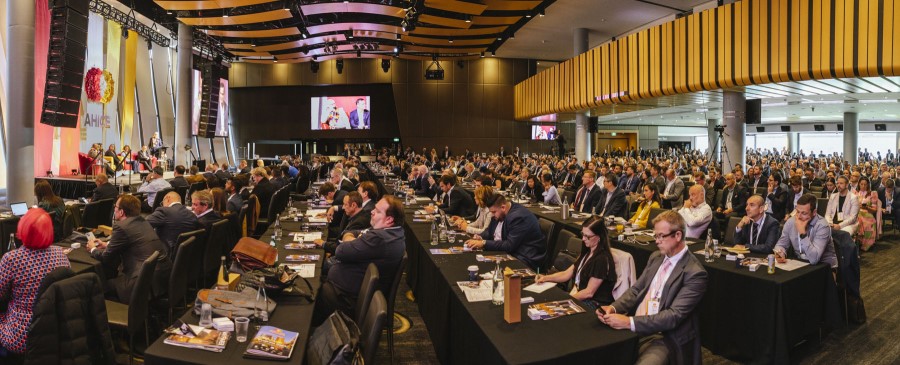
Luxury is a term never far from any hotelier’s lips and Robert Williams from Watson Farley and Williams, was keen to quiz his panel on their thoughts and aspirations.
An observation that arose early in the discussion was the apparent absence of luxury product on Queensland’s Gold Coast.
Accor’s Lindsay Leeser was quick to counter with “our Mondrian Residences shows that the Gold Coast has every reason to be a luxury market.” and “a Sofitel of the right size is a great example of how a hotel can lift an entire market.”
Marriott’s Richard Crawford was understandably excited to talk on Sydney’s forthcoming W Hotel “which will be the largest W Hotel anywhere in the world” with almost 600 rooms. He also pointed out that the planned $500m Ritz-Carlton at Mariners Cove will also include a superyacht marina.
On the subject of luxury hotel rates, Crawford also noted that $300 was once an “eye-watering” room rate for Australians. “I’d say the AU$500 dollars is the new AU$300 and AU$1000 (ADR) is not out of the question.”
Jael Fischer of Six Senses observed that with the Australian dollar exchange rate, this made our ADR even cheaper for the international market.
Mixed use (hotel and residential) was another way for developers to enter the luxury market with Langham’s Markus Aklin adding “it’s a way brands can add real value. I’m surprised it wasn’t done sooner.”
With glasses of wine gracefully received by the delegates, investors took to the stage to comment on ‘The Essential Outlook’ as a fitting finale to three days of intense hotel talk.
JLL’s Peter Harper moderated the panel with Paul Salter “going against the tide” saying “it’s going to be tough in the next 12 months despite all the optimism.”
Dave Baswal of Ovolo thought the focus should be on attracting more domestic travel while Vicki Chow of Stonewood suggested “regional is the way to go.”
Referencing the new Moxy property at Mascot, Maria Verner of RF Corval added “experience is the key. Be brave.”
In terms of the next five years the panel summed up not only their individual outlooks, but that of the entire event by reinforcing the importance of ESG (Environmental, Social, and Governance) in dictating the future for hospitality in all aspects of operation, not just construction and operation.
“We all must play the ESG game,” concluded Paul Salter.

